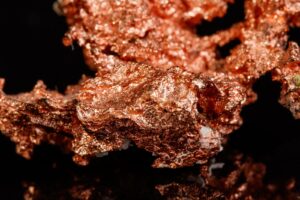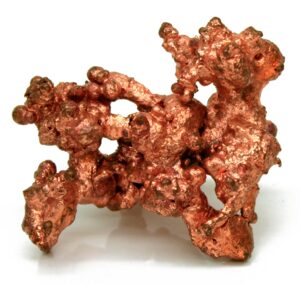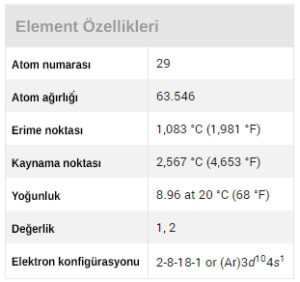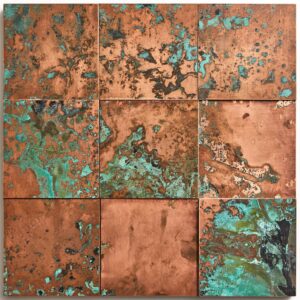CABLES AND ELECTROMAGNETIC COMPATIBILITY
Temmuz 12, 2021Tiger mosquito
Temmuz 5, 2022
Copper is a reddish, highly ductile metal of Group 11 of the periodic table, which is a good conductor of electricity and heat. Copper is found in nature in free metallic form. This natural copper was first used as a replacement for stone by Neolithic (New Stone Age) people (8000 BC). Metallurgy was born in Mesopotamia by shaping copper in molds (4000 BC), reducing it to metal from mines with fire and charcoal, and alloying it with tin as bronze. Rome’s copper supply came almost entirely from Cyprus. Aes Cyprium, known as the “metal of Cyprus”, was shortened to cyprium and later changed to cuprum.

Occurrence, uses and properties
Native copper is found in many places as a primary mineral in basaltic lavas and is also found reduced from copper compounds such as sulphides, arsenite, chlorides, and carbonates. Copper coexists in many minerals such as chalcosite, chalcopyrite, bornite, cuprite, malachite and azurite. It is found in the ashes of seaweeds, many sea corals, human liver, and many mollusks and arthropods. Copper plays the same role in oxygen transport in the hemocyanin of blue-blooded mollusks and crustaceans as iron does in the hemoglobin of red-blooded animals. In humans, copper, as a trace element, helps to catalyze the formation of hemoglobin. A porphyry copper deposit in the Chilean Andes is the largest known deposit of the mineral. By the turn of the century, Chile had become the world’s leading producer of copper. Other major producers include Peru, China, and the United States.

Copper is one of the most ductile metals that is not particularly strong or hard. Strength and hardness are significantly increased by cold working due to the formation of elongated crystals with the same face-centered cubic structure found in softer annealed copper. Common gases such as oxygen, nitrogen, carbon dioxide and sulfur dioxide dissolve in molten copper and greatly affect the mechanical and electrical properties of the solidified metal. It is second only to silver in terms of thermal and electrical conductivity. Natural copper is a mixture of two stable isotopes. Since copper is located below hydrogen in the electromotor series, it does not dissolve in acids with the formation of hydrogen, although it will react with oxidizing acids such as nitric and hot, concentrated sulfuric acid. Copper resists the movement of the atmosphere and seawater. However, prolonged exposure to air causes the formation of a thin, green protective coating, which is a mixture of hydroxocarbonate, hydroxosulphate, and small amounts of other compounds. However, it dissolves easily in nitric acid and sulfuric acid in the presence of oxygen. It also dissolves in aqueous ammonia or potassium cyanide in the presence of oxygen due to the formation of very stable cyano complexes upon dissolution.

Basic compounds
All copper (copper) compounds are diamagnetic and colorless with a few exceptions. Important industrial compounds of copper include copper oxide (Cu2O), copper chloride (Cu2Cl2) and copper sulfide (Cu2S). Copper oxide is a red or reddish-brown crystal or powder that occurs in nature as the mineral cuprite. Reduction of mixed copper oxide ores with copper metal or It is produced on a large scale by electrolysis of an aqueous solution of sodium chloride using copper electrodes. The pure compound is insoluble in water, but soluble in hydrochloric acid or ammonia. Copper oxide is mainly used as a red pigment for antifouling paints, glass, porcelain glazes and ceramics, and as a fungicide in seed or crops.
Copper chloride is a whitish to grayish solid that occurs as the mineral nantokite. It is usually prepared by reduction of copper(II) chloride with metallic copper. The pure compound is stable in dry air. Humid air turns it into a greenish oxygenated compound and converts to copper(II) chloride when exposed to light. It is insoluble in water but soluble in concentrated hydrochloric acid or ammonia due to the formation of complex ions.
Copper chloride is used as a catalyst in a number of organic reactions, particularly in the synthesis of acrylonitrile from acetylene and hydrogen cyanide; as a decolorizing and desulfurizing agent for petroleum products; as a denitrifying agent for cellulose; and as a thickening agent for soaps, fats and oils.
Copper sulfide occurs as black powder or lumps and exists as the mineral chalcosite. Large quantities of the compound are obtained by heating copper sulfide (CuS) in a stream of hydrogen. Copper sulfide is insoluble in water but soluble in ammonium hydroxide and nitric acid. Its applications include use in solar cells, bright paints, electrodes.
Copper(II) compounds of commercial value include cupric oxide (CuO), cupric chloride (CuCl2) and cupric sulfate (CuSO4). Cupric oxide is a black powder that occurs as the minerals tenorite and paramelaconite. It is produced in large quantities by roasting mixed copper oxide ores in an oven at a temperature below 1,030 °C (1,900 °F). The pure compound is soluble in acids and alkaline cyanides. Copper oxide is used as a pigment (blue to green) for glasses, porcelain glazes and artificial stones. It is also used as a desulfurization agent and oxidation catalyst for petroleum gases.
Copper chloride is a yellowish to brown powder that readily absorbs moisture from the air and turns into a greenish-blue hydrate, CuCl2∙2H2O. The hydrate is usually prepared by passing chlorine and water through a contact tower filled with metallic copper. Anhydrous salt is obtained by heating the hydrate to 100 °C (212 °F). Like copper chloride, copper chloride is used as a catalyst in a number of organic reactions, for example, in the chlorination of hydrocarbons. It also acts as a wood preservative, mordant (fixer), disinfectant, feed additive, pigment for glass and ceramics in dyeing and printing of fabrics.
Source: https://www.britannica.com/science/copper
